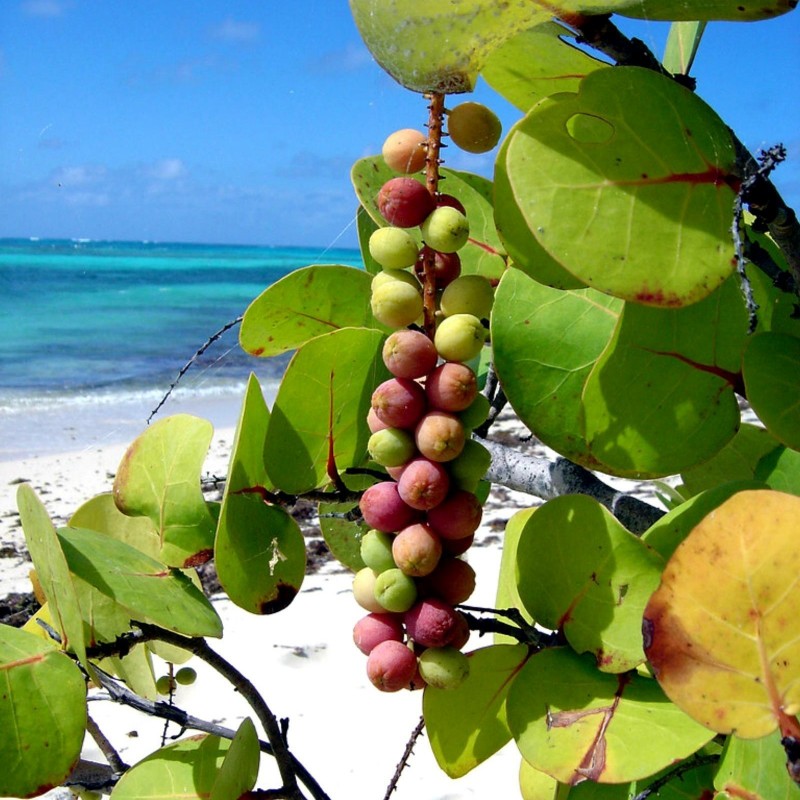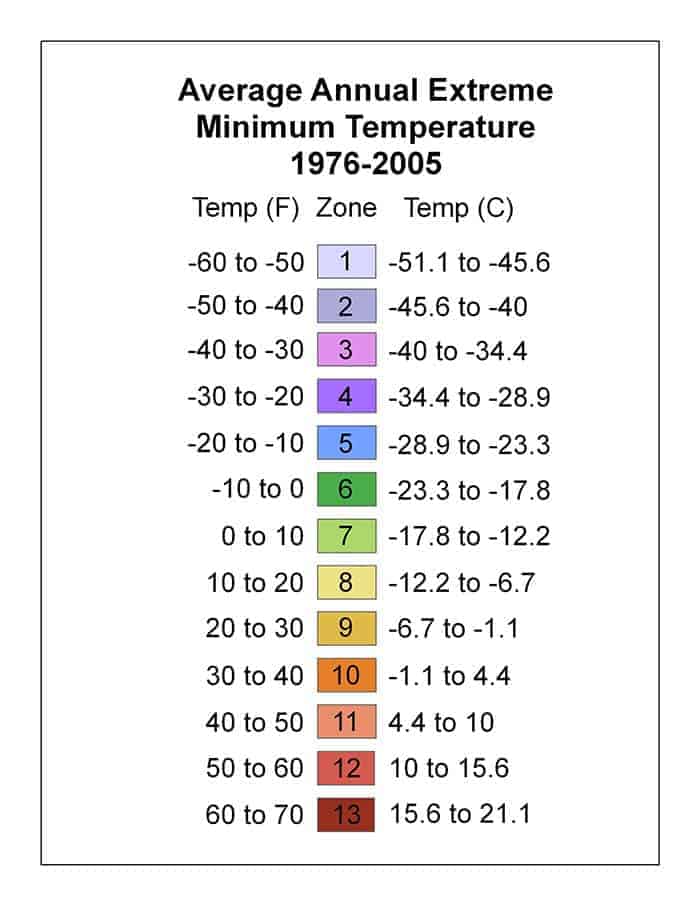
Denna anläggning är resistent mot vinter och frost. Se mer i beskrivningen.











Coccoloba uvifera is a species of flowering plant in the buckwheat family, Polygonaceae, that is native to coastal beaches throughout tropical America and the Caribbean, including southern Florida,
Coccoloba uvifera is a species of flowering plant in the buckwheat family, Polygonaceae, that is native to coastal beaches throughout tropical America and the Caribbean, including southern Florida, the Bahamas, Barbados, and Bermuda. Common names include Seagrape and Baygrape.
Description
Coccoloba uvifera is a sprawling evergreen shrub or small tree that reaches a maximum height of 8 m (26 ft), but most specimens are little more than 2 m (6.6 ft) tall[citation needed]. It has large, round, leathery leaves (up to 25 cm/9.8 in diameter) with a primary vein that has a red color extending from the base, and the entire leaf turns red as it ages. The bark is smooth and yellowish.
In late summer it bears green fruit, about 2 cm (0.79 in) diameter, in large grape-like clusters. The fruit gradually ripens to a purplish color. Each contains a large pit that constitutes most of the volume of the fruit.
Cultivation and propagation
Capable of surviving down to approximately 2°C, the tree is unable to survive frost. The leaves turn reddish before falling. Its seeds have to be planted immediately, for unlike most plants, they cannot withstand being stored for future planting.
Coccoloba uvifera is wind resistant, moderately tolerant of shade, and highly tolerant of salt, so it is often planted to stabilize beach edges; it is also planted as an ornamental shrub. The fruit is very tasty and can be used for jam or eaten directly from the tree.
Coccoloba uvifera is a dioecious species; that is, male and female flowers are borne on separate plants, and cross-pollination is necessary for fruit to develop. Honey bees and other insects help pollinate these plants [4]; male and female plants can be distinguished by the appearance of their flowers, as males usually show dead flower stalks.
Hardiness: USDA zone 9B - 11
Propagation: seeds and cuttings
Culture: partial shade/full sun, drought tolerance
Uses
Coccoloba uvifera is most often used in landscaping, as it is a popular ornamental plant in south Florida yards as well as a dune stabilizer and coastal windbreak. Tall sea grape plants are even recommended to use as a light barrier between development on coastlines to protect sea turtles.
The wood of the sea grape is sometimes used for firewood, making charcoal and even cabinetry.
The reddish fruits of the sea grape may be eaten raw, cooked into jellies and jams, or fermented into sea grape wine. Seagrape wine may also be fermented into sea grape vinegar, which is also useful in cooking.
The sap of the sea grape is used in the West Indies and Jamaica for dyeing and tanning of leather.
Sowing Instructions
Seed Germination
|
Sowing Instructions |
|
|
Propagation: |
Seeds |
|
Pretreat: |
soak in warm water for 24 hours |
|
Stratification: |
0 |
|
Sowing Time: |
all year round |
|
Sowing Depth: |
1 cm |
|
Sowing Mix: |
Coir or sowing mix + sand or perlite |
|
Germination temperature: |
25-28°C |
|
Location: |
bright + keep constantly moist not wet |
|
Germination Time: |
3 - 6 weeks |
|
Watering: |
Water regularly during the growing season |
|
|
|
البيانات

 Reviews (0)
Reviews (0)